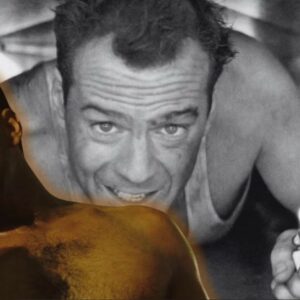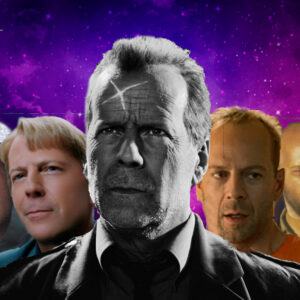Bruce Willis’s 2018 reboot of the classic revenge thriller Death Wish brings a modern twist to a timeless story. While the film is known for its action-packed sequences and gripping narrative, it is the subtle, enigmatic details that add an extra layer of intrigue. Let’s explore the five most mysterious elements in the film and examine how these subtle nuances enhance its overall appeal.
1. The Shrouded Past
One of the most intriguing aspects of Death Wish is the way it presents its protagonist, Paul Kersey, and his past. In the film, Paul Kersey is a mild-mannered surgeon whose life takes a dramatic turn after a brutal home invasion. While the focus is on his transformation into a vigilante, the film deliberately leaves aspects of his past shrouded in mystery.
The Enigma of Kersey’s Background
The movie provides only fragmented glimpses into Kersey’s background before the incident that sets off the plot. We know he is a skilled surgeon with a loving family, but details about his personal history, previous life choices, or even his emotional state prior to the attack are sparse. This intentional ambiguity about his past serves multiple purposes:
- Character Depth: By not providing a complete backstory, the film allows viewers to project their interpretations onto Kersey. This ambiguity creates a more complex and multifaceted character. The audience is left to wonder if there were latent desires for vengeance or unresolved issues in Kersey’s past that influenced his actions.
- Focus on Transformation: The shrouded past emphasizes the transformation of Kersey’s character. The film is more interested in showing his evolution from a compassionate surgeon to a relentless avenger, rather than exploring his history in depth.
- Mystery and Intrigue: The lack of detail about Kersey’s past adds an element of mystery. It invites viewers to delve deeper into his motivations and psychological state, keeping them engaged and guessing about his true nature.
2. The Unseen Influence of the Crime Boss
Another enigmatic detail in Death Wish is the role of the crime boss, who orchestrates the violent attack on Kersey’s family. While the film’s narrative revolves around Kersey’s quest for justice, the crime boss remains a largely unseen figure.
The Veiled Presence of the Antagonist
The film introduces the crime boss through indirect means. His presence is felt through his orders and the chaos he unleashes, but he himself is rarely seen or directly confronted. This decision serves several purposes:
- Symbolic Representation: The unseen crime boss represents the larger, more abstract threat of crime and corruption that Kersey is fighting against. By not showing him directly, the film highlights how pervasive and elusive these threats can be.
- Heightened Tension: The lack of a concrete antagonist heightens the tension. The audience knows there is a powerful force behind the chaos, but the mystery surrounding this figure adds to the suspense and keeps viewers on edge.
- Focus on Kersey’s Journey: By keeping the crime boss in the shadows, the film maintains its focus on Kersey’s personal journey. The lack of direct confrontation with the antagonist allows for a deeper exploration of Kersey’s psyche and motivations.
3. The Symbolism of the Medical Profession
Paul Kersey’s profession as a surgeon is more than just a plot device; it carries significant symbolic weight in the film. His skills and experiences as a doctor play a crucial role in his transformation and actions throughout the story.
Medical Skills as Metaphor
The film uses Kersey’s medical background as a metaphor for his journey from healer to avenger:
- Healing and Harm: Kersey’s profession represents his initial role as a healer, dedicated to saving lives and alleviating suffering. His transition to vigilantism symbolizes a shift from healing to causing harm. This contrast underscores the complexity of his character and the moral dilemmas he faces.
- Precision and Control: The meticulous nature of Kersey’s medical work mirrors his approach to vigilantism. His precision in surgery is reflected in his methodical approach to seeking revenge, highlighting his controlled and calculated nature.
- Moral Ambiguity: The juxtaposition of Kersey’s medical profession with his violent actions raises questions about morality and justice. It prompts viewers to consider the ethical implications of his actions and whether his past profession can justify or redeem his current behavior.
4. The Role of Social Media
In the modern world, social media plays a significant role in shaping perceptions and influencing public opinion. Death Wish incorporates social media as a crucial element in the narrative, using it to highlight themes of anonymity, influence, and public perception.
Social Media’s Impact on the Story
Social media in Death Wish serves as both a narrative device and a commentary on contemporary issues:
- Anonymity and Identity: The film explores how social media allows individuals to hide behind anonymous profiles. This anonymity is reflected in Kersey’s transformation into a vigilante, as he operates under the guise of anonymity while pursuing justice.
- Public Perception: Social media amplifies Kersey’s actions, influencing public perception and media portrayal. The film uses this dynamic to comment on how easily public opinion can be swayed and how individuals can become symbols or targets in the digital age.
- Vigilante Justice: The role of social media also raises questions about the legitimacy of vigilante justice. Kersey’s actions are scrutinized and debated online, reflecting broader societal discussions about justice, morality, and the impact of media on public perception.
5. The Ambiguous Ending
The ending of Death Wish leaves viewers with lingering questions and a sense of ambiguity. While the film concludes with a resolution to Kersey’s quest for revenge, it does not provide a clear-cut closure to his character’s arc.
Interpreting the Final Scenes
The film’s ending is open to interpretation, leaving several elements unresolved:
- Kersey’s Future: The final scenes leave Kersey’s future uncertain. While he achieves his goal of avenging his family, the film does not provide a definitive resolution regarding his fate or the consequences of his actions.
- Moral Ambiguity: The ambiguous ending reinforces the film’s exploration of moral ambiguity. It prompts viewers to consider the long-term implications of Kersey’s vigilantism and whether his actions will ultimately lead to redemption or further complications.
- Viewer Engagement: The open-ended conclusion encourages viewers to engage with the film on a deeper level. It invites them to ponder the complexities of justice, morality, and the human condition, fostering ongoing discussion and analysis.
Conclusion
Bruce Willis’s Death Wish reboot offers more than just thrilling action and suspense. The film’s hidden details, from the shrouded past of its protagonist to the role of social media, add layers of complexity and intrigue. By exploring these enigmatic elements, viewers are invited to engage with the film on a deeper level and consider the broader implications of its themes. Whether it’s the mysterious past of Paul Kersey, the unseen crime boss, or the ambiguous ending, Death Wish keeps audiences guessing and reflecting long after the credits roll.





